Dances and events of Dainichido Bugaku
Momioshi
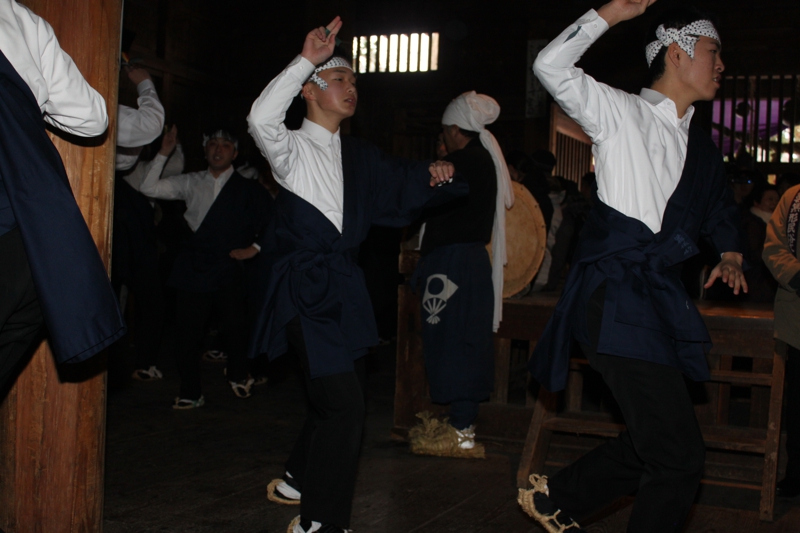
Dance expressing agricultural work
Hulling is said to represent agricultural work. Served by many young people of Azukizawa. Wearing a bowl roll on their head, five-colored paper on the middle finger of their right hand, wearing a hanten, black pants, and straw ji, they dance to the shouts of "Yonyalayae" and the "Soryansae".
Mikomai
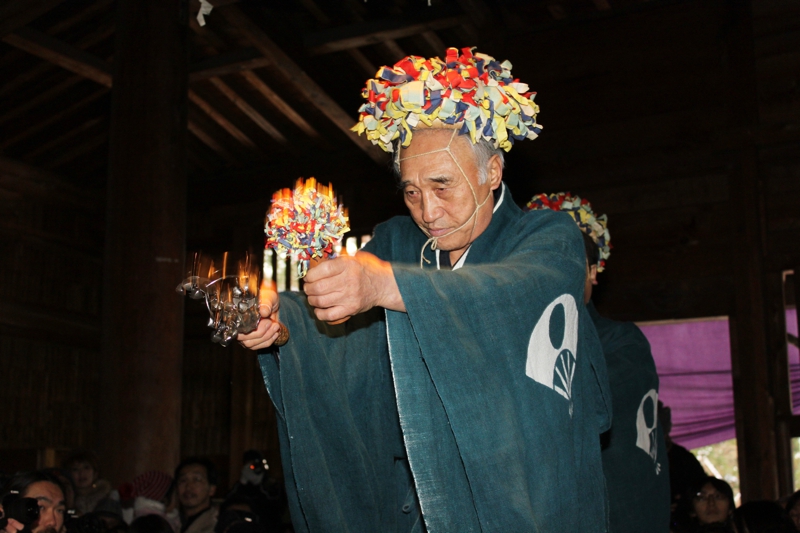
Dance to the God of Heaven
Originally, all the dancers (dancers) danced one by one along with the next Shinto name hand dance, but now several people dance on the main stage. When dancing in each village, these two dances are performed and then each dance is performed. It is also called a dance offered to the god of heaven, and it is performed by holding a bell in the right hand and a paper drape (a paper cut into a wooden handle) in the left hand, and dancing while swinging the bell while bending and stretching both legs (while going through ups and downs).
Kanatemai

Dance to the god of the earth
It is said to be a dance offered to the god of the earth, and the dance is performed while holding only a paper drape (a piece of paper cut into small pieces on a wooden handle) in the left hand and moving it up and down with both arms outstretched.
In addition to the main stage, Mikomai and the Kanatemai are performed over and over again, and it is said that they dance to incarnate from a person to a god.
Daishogyoji

Gongenmai Azukizawa
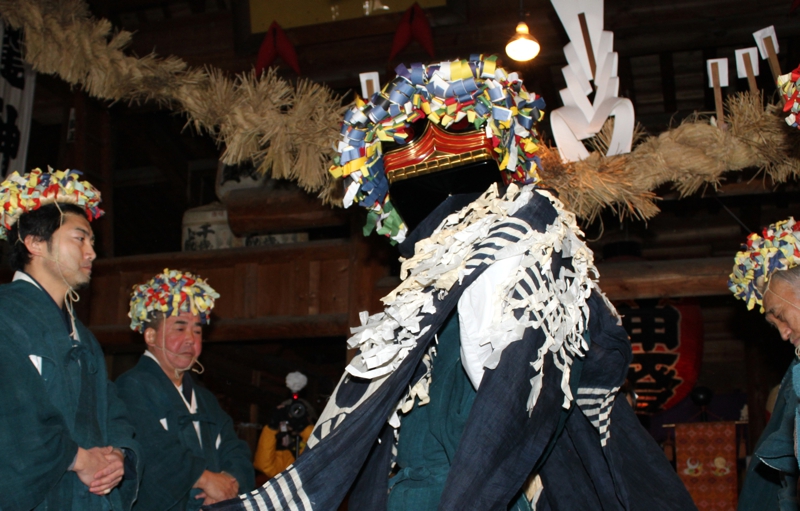
Dance to comfort the spirit of the Prince Gonomiya
It is said to be the dance of Gonomiya Daigongen, and the lion's head is called Gongen-sama. It is said that the fifth prince of Emperor Hirohito entered Gonomiya Prison and did not return, but a dragon fluttered in Hachimori Prison next to it, causing fear of the villagers, so by trust, he dedicated a lion's head to comfort the spirit of the prince and began to dance. Dancer raises it above their heads and dances bravely, and a child wags the tail of a lion. Before the dance, a whistle called "waiting flute" is blown to welcome the gods.
Komamai Ozato
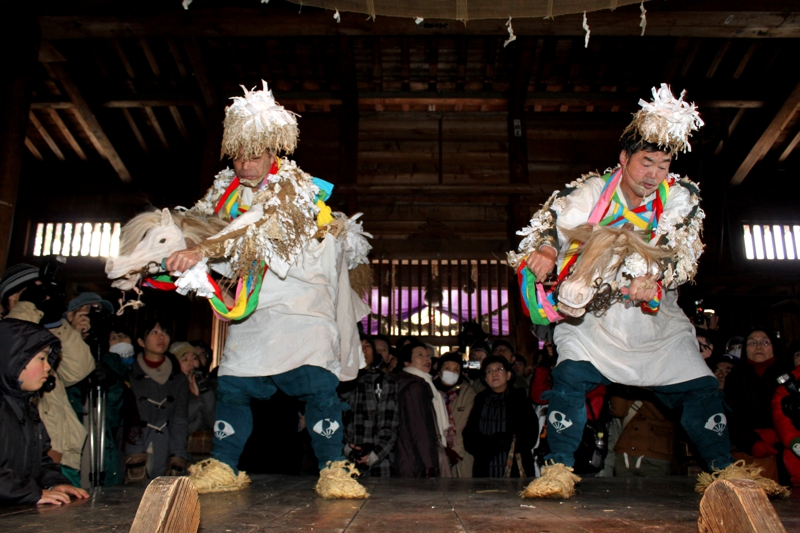
Horse Dance of the Prince Gonomiya
It is said to be the dance of Princess Kissho's horse and Prince Gonomiya's horse, but there is also a theory that it is the dance of the moon-haired horse that Prince Gonomiya received from Emperor Ankan when he left the capital. As a dance, it is said that it is only recorded elsewhere, and it is said to be the prototype of Komamai that has been handed down throughout the country.
The head of this dance is considered to be a divine body, and it is said that wearing it will make any gentle person brave like a rough piece.
Uhenmai Nagamine
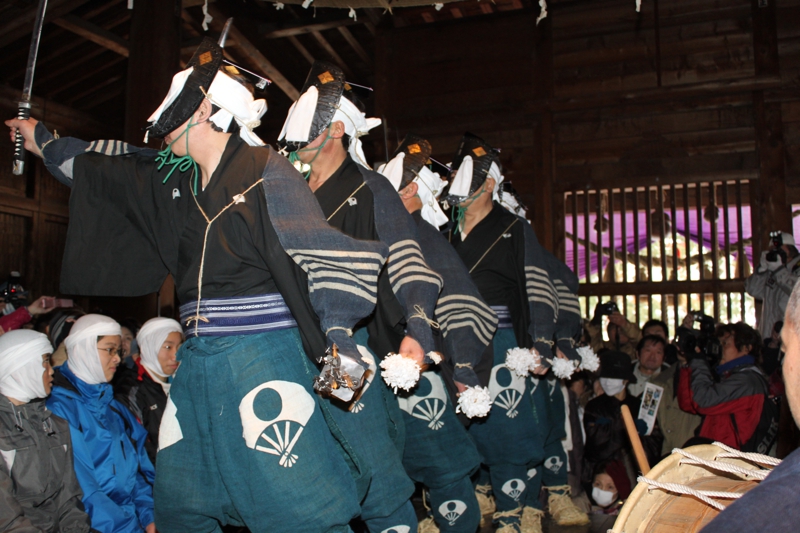
Dance of Princess Kissho's Grave
In ancient times, it was also called "Obe Mai", and Obe means the axe part, also called Somatori no mai. It is also said to be a choreography of burying the body of Princess Kissho, the empress of Emperor Hirohito.
The Six Wise Men wear origami hats, wear a face called a cheek mask, and dance with a sword in their right hand. At the end of the dance, they throw a talisman that says good luck will be bestowed and leave the stage.
Torimai Ozato

Dance of the birds of ‘Danburi choja’
It is said that the dance was made from the construction of the Dainichido Shrine, where dance is performed, and the "Danburi Choja" couple raised the chickens.
Three children wear bird shells (male, female, and chick), the male holds a bell in his left hand, and everyone dances with a Hinomaru handy fan.
Godaisonmai Taninai
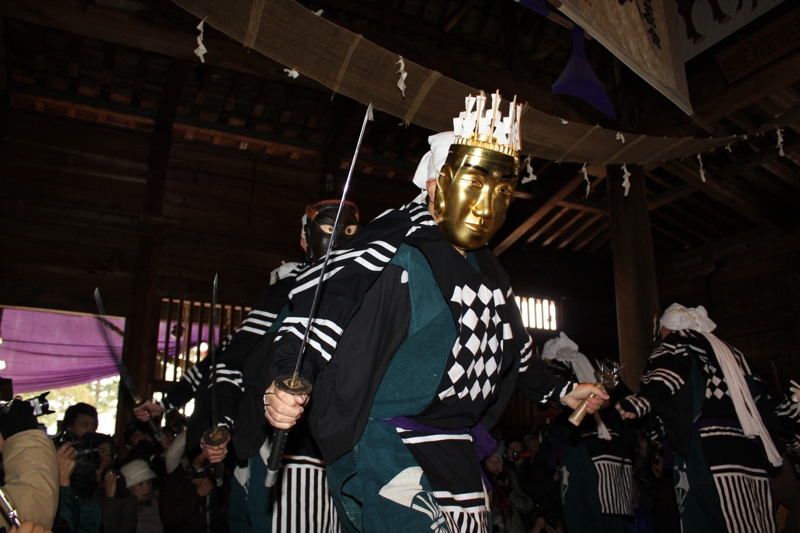
‘Danburi Choja’ and the dance of the four vassals
An old record says, "Uchikoshi and costume are crowned with white cloth, hakama, leg ties, the masks of both Dainichison and the Four Daimyo Kings are hung on, and the ritual statement of the Five Great Sons is recited and performed. It is said to be the dance of a danburi elder couple and four vassals. However, there is a difference between the treatment of masks and the statements that are recited.
Koshomai Osato
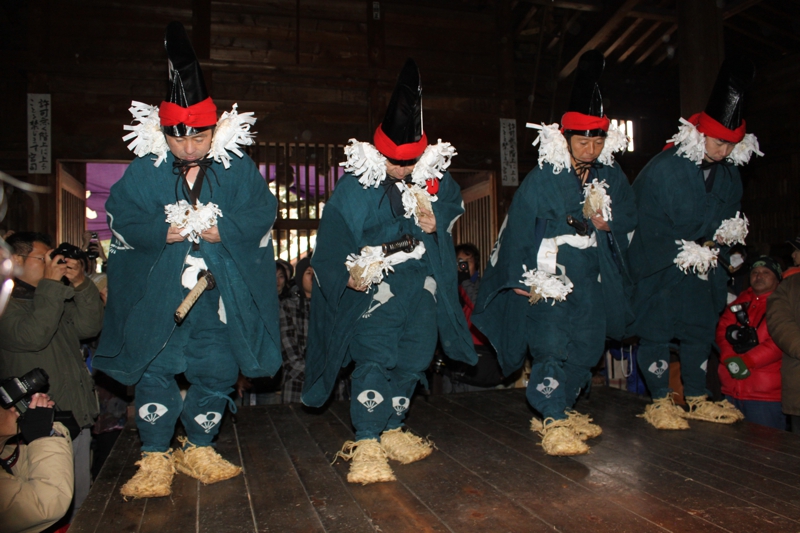
Dance of carving the body of the god Dainichi
It is also called the Bachitomai, the Doshitomai, and the Banshomai, and it is said that it is a dance that carves the divine body of the Dainichi God.
The characteristic of this dance is that it basically stands in a horizontal line with the front of the stage, and the four people switch places as they move from place to place, and finally return to their original position, and the movement is very slow.
Dengakumai Azukizawa
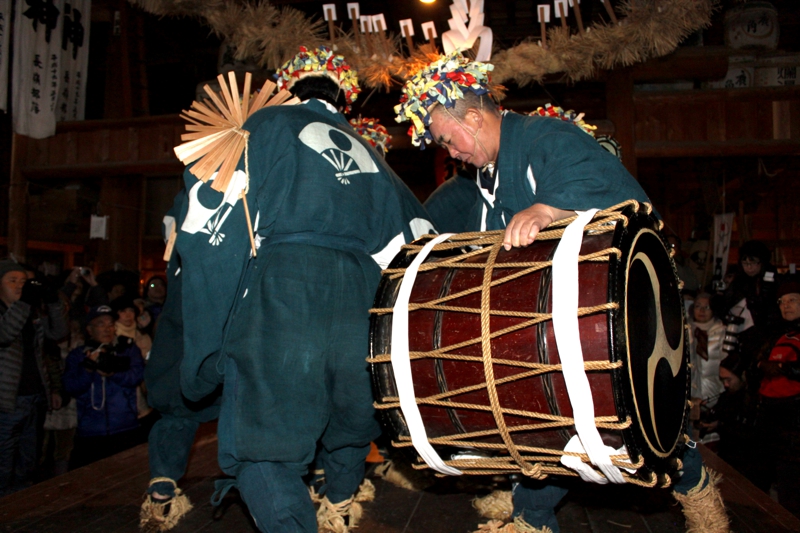
A dance in which "Danburi Choja" comforted farmers
It is said that the Danburi Elder couple made the dance to comfort the farmers. It is said to have retained the oldest form of Dengakumai remaining in Japan.
There are four dancers, one each of a small drum and a taiko drum, but those with small drums are called tengu drums, and this drum is derived from the fact that it was given to them by tengu.
